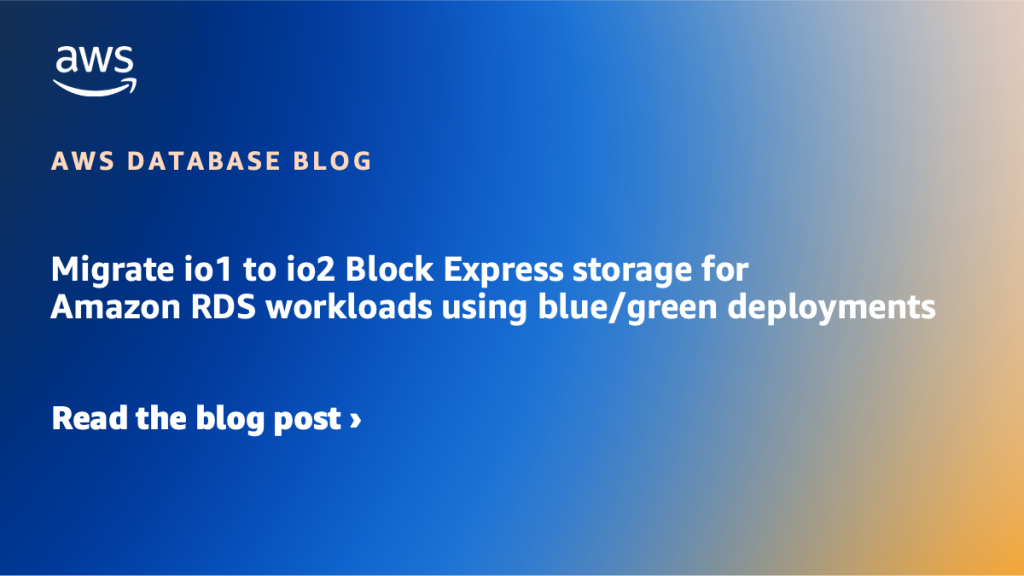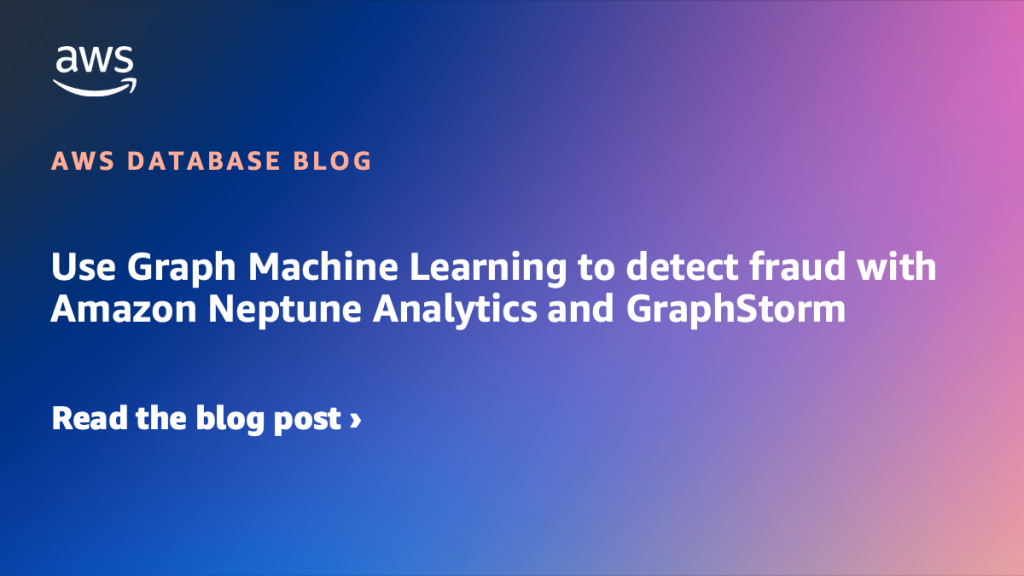AWS Database Blog
Category: Intermediate (200)
How to evaluate throughput utilization for Amazon DynamoDB tables in provisioned mode
In this post, we demonstrate how to evaluate throughput utilization for DynamoDB tables in provisioned mode. Understanding this metrics helps you determine whether switching to on-demand mode is the right choice. Moving to on-demand mode, where you pay-per-request for throughput, can optimize costs, eliminate capacity planning, minimize operational overhead, and enhance overall user experience for your applications.
SQL to NoSQL: Planning your application migration to Amazon DynamoDB
This is the first part of a series exploring how to effectively migrate from SQL to DynamoDB. We will examine how to analyze existing database structures and access patterns to prepare for migration, focusing on schema analysis, query patterns, and usage metrics that inform DynamoDB data model design.
Better together: Amazon RDS for SQL Server and Amazon SageMaker Lakehouse, a generative AI data integration use case
Generative AI solutions are transforming how businesses operate worldwide. It has now become paramount for businesses to integrate generative AI capabilities into their customer-facing services and applications. The challenge they often face is the need to use massive amounts of relational data hosted on SQL Server databases to contextualize these new generative AI solutions. In this post, we demonstrate how you can address this challenge by combining Amazon RDS for SQL Server and Amazon SageMaker Lakehouse.
Announcing Valkey GLIDE 2.0 with support for Go, OpenTelemetry, and batching
AWS recently announced, in partnership with Google Cloud and the Valkey community, the general availability of Valkey General Language Independent Driver for the Enterprise (GLIDE) 2.0, the latest release. Valkey GLIDE is multi-language client library designed for reliability and performance. In this post, we discuss what Valkey GLIDE is and its key benefits, and then dive into its new enhancements.
Supercharging AWS database development with AWS MCP servers
Amazon Aurora, Amazon DynamoDB, and Amazon ElastiCache are popular choices for developers powering critical workloads, including global commerce platforms, financial systems, and real-time analytics applications. To enhance productivity, developers are supplementing everyday tasks with AI-assisted tools that understand context, suggest improvements, and help reason through system configurations. Model Context Protocol (MCP) is at the helm of this revolution, rapidly transforming how developers integrate AI assistants into their development pipelines. In this post, we explore the core concepts behind MCP and demonstrate how new AWS MCP servers can accelerate your database development through natural language prompts.
Leveling up Amazon RDS with AWS Graviton4: Benchmarks
In November 2024, AWS introduced the latest evolution of its custom-designed ARM-based processors with Graviton4, delivering significant performance and efficiency improvements for Amazon RDS for PostgreSQL, MySQL, and MariaDB and Amazon Aurora. In this post, we focus on Amazon RDS for PostgreSQL and compare the performance of the new Graviton4 instances to both Graviton3 and Graviton2. Using benchmarks, we evaluate throughput, latency, and price-performance, showcasing the advantages of Graviton4 for modern database workloads.
Optimize Amazon RDS Multi-AZ backups with incremental snapshots
As your business grows and your databases expand into the terabyte range, optimizing your backup strategy becomes increasingly important for maintaining operational excellence. Modern backup solutions that implement incremental backups where possible, offer an elegant way to protect your valuable data while minimizing maintenance windows and ensuring consistent application performance. In this post, we discuss the aspects of maximizing the use of incremental backups in Amazon RDS, leading to backup times remaining steady even while the database grows.
Migrate io1 to io2 Block Express storage for Amazon RDS workloads using blue/green deployments
Amazon RDS provides two storage types: Provisioned IOPS SSD and General Purpose SSD. They differ in performance characteristics and price, which means that you can tailor your storage performance and cost to the needs of your database workload. In this post, we show how you can migrate from io1 to io2 Block Express Provisioned IOPS SSD storage.
Use Graph Machine Learning to detect fraud with Amazon Neptune Analytics and GraphStorm
Every year, businesses and consumers lose billions of dollars to fraud, with consumers reporting $12.5 billion lost to fraud in 2024, a 25% increase year over year. People who commit fraud often work together in organized fraud networks, running many different schemes that companies struggle to detect and stop. In this post, we discuss how to use Amazon Neptune Analytics, a memory-optimized graph database engine for analytics, and GraphStorm, a scalable open source graph machine learning (ML) library, to build a fraud analysis pipeline with AWS services.
Building resilient applications: design patterns for handling database outages
Database outages, whether planned or unexpected, pose significant challenges to applications. Planned outages for maintenance can be scheduled but still impact users. Unplanned outages are more disruptive and can happen at critical times. Even the most robust and resilient databases will inevitably experience outages, making application resiliency a critical consideration in modern system design. In […]









